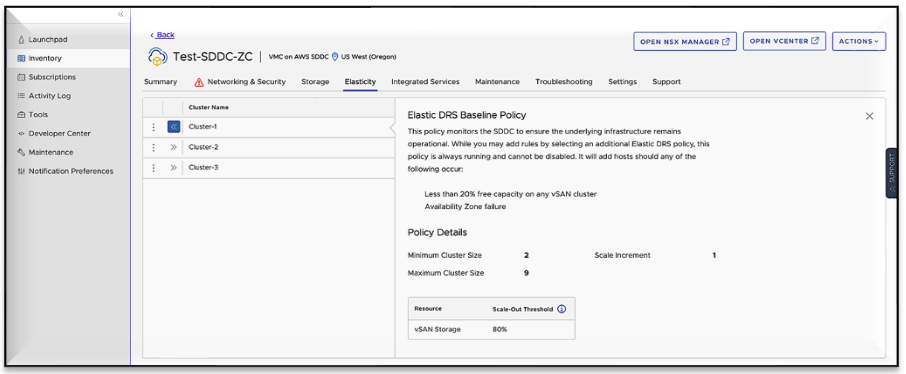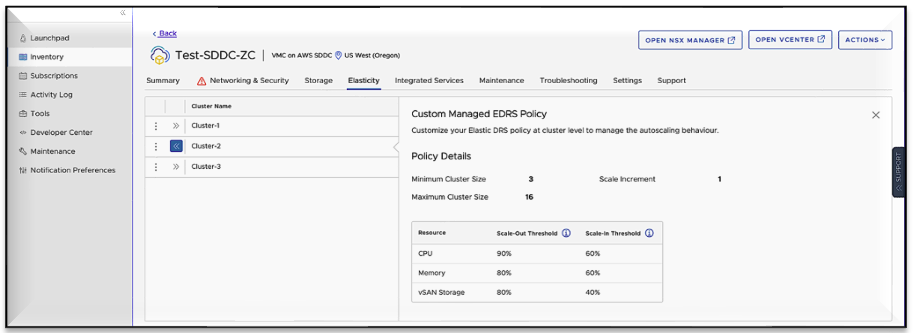- 8 communication strategy tips for IT leaders
- Why these $160 earbuds are my new favorite for work and travel over the AirPods
- US Offers $10 Million Reward for Tips About State-Linked RedLine Cybercriminals
- You can get an iPhone 16 for free with this Boost Mobile deal - no trade-in required
- IRS open-sources Direct File tax software amid political and industry pushback - here's why
Custom Managed Elastic DRS Policy: Improving Cost-Efficiency and Performance in VMware Cloud on AWS

As organizations move their workloads to the cloud, they often struggle to balance performance and cost efficiency. Elastic Distributed Resource Scheduler (EDRS) in VMware Cloud helps organizations optimize their workload placement and resource allocation by automating the process of scaling up or scaling down the cluster in response to changing demand. VMware Cloud continues to evolve, delivering new features and updates to enhance the elasticity. Recent updates provide organizations with even greater control and flexibility in scaling their resources based on workload demands. Let’s explore two significant updates, the introduction of the Elasticity tab in the SDDC UI and the custom policy feature. Elastic DRS is a release agnostic service and you can start using these new features right away!
Elasticity Tab in SDDC UI
To simplify the management and configuration of Elastic DRS, VMware Cloud has introduced the Elasticity tab in the SDDC (Software-Defined Data Center) UI. This dedicated tab provides a centralized location for organizations to configure and monitor Elastic DRS settings. Administrators can easily access and manage Elastic DRS policies, view scaling events, and monitor the impact of resource scaling on workload performance—all within the familiar SDDC UI.

In addition to the Elasticity tab, VMware Cloud now offers a custom policy feature for Elastic DRS. While the current EDRS policies are helpful, customers have unique business needs that may require custom policies. Custom managed EDRS policies allow customers to define and manage their own EDRS policies, tailored to their specific workload and business requirements. By tailoring policies to specific applications or business needs, organizations can achieve more granular control over resource scaling. Let me share some benefits of using custom managed EDRS policies in VMware Cloud and provide some use case examples.

With the custom policy feature, administrators can set thresholds and rules based on parameters such as CPU utilization, memory usage, or storage consumed. This enables precise scaling actions that align with specific workload characteristics. Custom policies empower organizations to optimize resource allocation and responsiveness, leading to improved performance and cost efficiency.
Benefits of Custom Managed EDRS Policies
- Flexibility: With custom managed EDRS policies, customers have the flexibility to define policies that align with their business needs. They can customize policies to meet their specific workload requirements, which can vary significantly from one organization to another. Separate Elasticity tab enables you to set and manage your EDRS policies.
- Cost Optimization: EDRS policies help optimize costs by allowing customers to make efficient use of their resources. With custom managed EDRS policies, customers can further fine-tune their policies to ensure they are optimized for their unique workload demands.
- Automation: EDRS policies automate the process of scaling up or scaling down the cluster in response to changes in resource demand, eliminating the need for manual intervention. With custom managed EDRS policies, customers can automate this process according to their own policies, further streamlining their operations.
- Performance: EDRS policies help ensure that workloads are always running on the most suitable host for optimal performance. With custom managed EDRS policies, customers can customize policies to ensure their workloads are running on the most performant hosts.

Use Case Examples
- Burst Workloads: Some workloads, such as VDI workloads, web applications or analytics, experience sudden spikes in demand. Custom managed EDRS policies can be defined to quickly add additional resources to handle the increased demand, then remove them when the demand subsides. This helps ensure optimal performance during peak periods while avoiding unnecessary costs during periods of low demand.
- Predictable Workloads: Some workloads, such as financial applications, have predictable demand patterns. Custom managed EDRS policies can be defined to scale resources up or down in anticipation of these patterns, ensuring optimal performance while avoiding over-provisioning and wasted resources.
- Seasonal Workloads: Some workloads, such as retail applications, experience seasonal demand fluctuations. Custom managed EDRS policies can be defined to automatically scale resources up or down based on these seasonal patterns, optimizing resource utilization and cost efficiency.
In conclusion, custom managed EDRS policies provide customers with the flexibility and control to optimize their resource utilization and cost efficiency based on their unique business requirements. By defining and managing their own EDRS policies, customers can automate the process of scaling up or scaling down the cluster in response to changing resource demands, ensuring optimal performance and cost efficiency.
If you would like to learn more about VMware Cloud on AWS, please check out the resources below:
Resources:
For more information related to VMware Cloud on AWS, here are some more learning resources for you:

